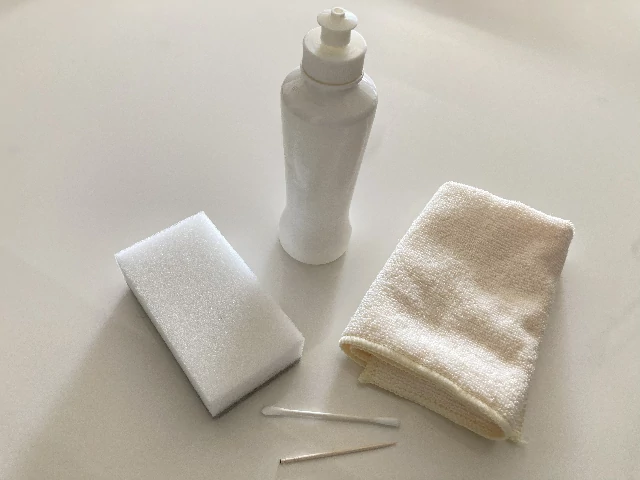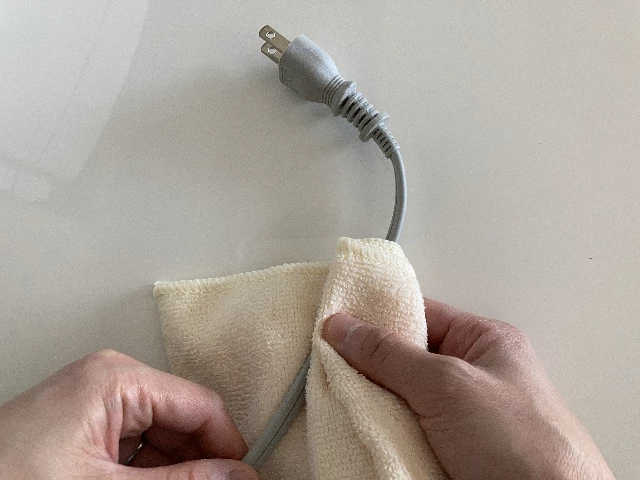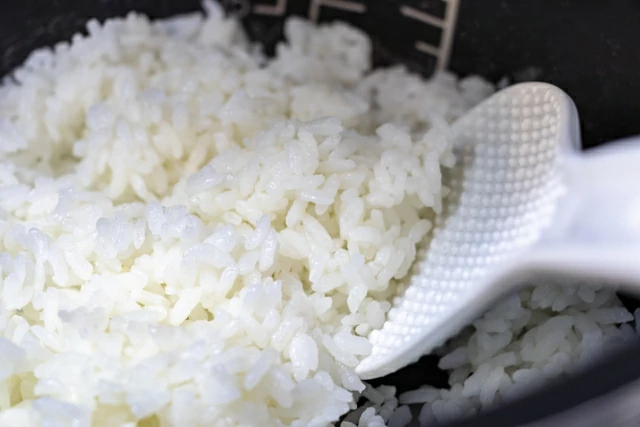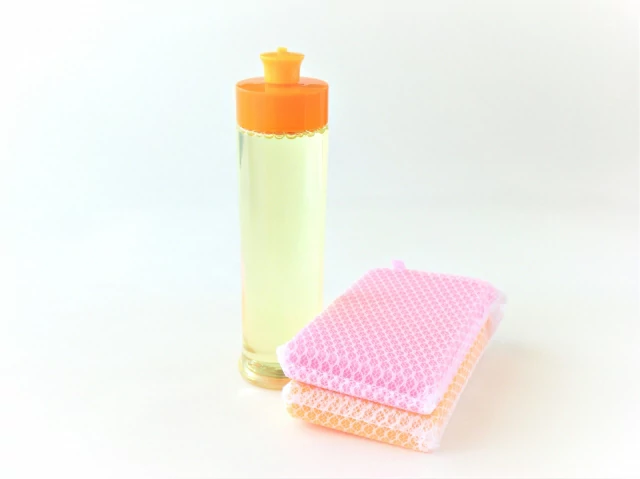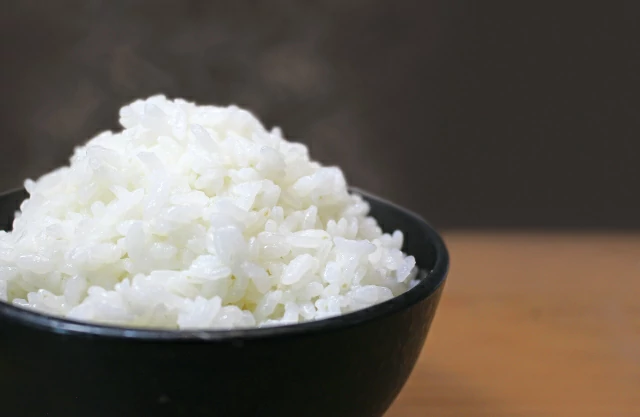A rice cooker is an indispensable item for making daily meals. Rice cookers are often used, but many people do not clean them after use. I want to keep it clean all the time because I use it every day. In order to eat rice deliciously and safely, let’s clean it up with reference to this article.
Rice cookers need regular cleaning
People tend to focus only on the inner pot and inner lid, which are easy to see dirty, but the rice cooker needs to be cleaned as a whole. When rice is cooked, steam mixed with rice starch adheres to the rice cooker. Keep it clean by cleaning it regularly.
frequency of grooming
The steam, which contains the starch of the rice, spreads throughout the rice cooker as well as the inner pot and inner lid, which are in direct contact with it. If dirt remains on the rice, it will dry at the high temperature of rice cooking, and not only will it become sticky and difficult to remove, but it will also cause bacteria and odors. In addition, the rice cooker, which is often placed in the kitchen, is prone to oil stains and dust from cooking. Ideally, you should wash the inner pot and inner lid after each use, and clean the entire rice cooker once a week.
Guideline for cleaning
- Inner pot and inner lid every time (every time you cook rice)
- Clean the rice cooker outside, inside, and steam vent once a week (each time if it gets dirty)
- Clean the bottom once a month (each time if it gets dirty)
Basic rice cooker cleaning method
Let’s clean the rice cooker. Rice cooker stains are mainly starchy and can be removed relatively easily without the use of special tools. The specifications of the inner lid and steam cap differ depending on the rice cooker, so please check the instructions on how to remove them.
Be sure to unplug the power plug beforehand to prevent the power from being accidentally turned on during cleaning.
tools to prepare
- soft sponge
- Neutral detergent for kitchen
- dish towel
- swab
- Toothpick
The tools you usually use are enough. In order not to damage the processing of the inner pot, use a soft sponge and do not use the hard nylon part. Cotton swabs and toothpicks are recommended for cleaning tight spots such as crevices.
Things that cause injuries
- Benzine, bleach, thinner, alcohol, cleanser
- Nylon surface of steel scrubber, scrubbing brush, sponge
- Dishwasher, do not wash
Step 1: Remove and wash the inner pot and inner lid
The inner pot and inner lid come into direct contact with steam and rice when cooking rice, so wash them every time you use them. After use, remove the inner pot and inner lid, and wash with a soft sponge using a neutral kitchen detergent.
Inner pot
Washing on the nylon side may cause the finish to come off, so wash with the soft side of a sponge to prevent the finish from coming off.
inner lid
For items with packing on the outside, dirt will get into the gaps, so wash thoroughly while turning the packing. If the dirt is stuck and cannot be removed, soak it in water for a while to soften it and make it easier to remove.
If the rice cooker has a removable steam cap, remove the steam cap as well and wash it.
The steam cap also needs to be cleaned every time you cook rice.
Step 2: Wipe the outer pot and sauce pan
After removing the inner pot, wipe the inside of the rice cooker. When you open the lid, the inside is surprisingly dirty with water droplets and rice sticking to it. Don’t forget to remove the rice grains as they may be inside.
Outer pot
If the sensor on the bottom is dirty, the sensor may not work and the rice may not be cooked properly, so wipe it well.
Soup receiver
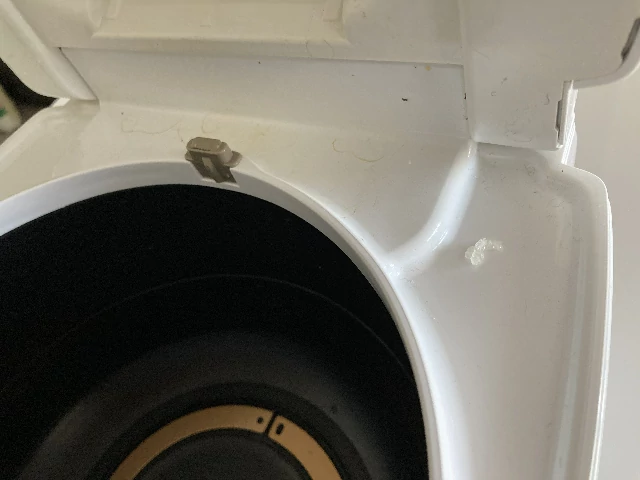
Water droplets fall on the saucepan and dirt easily accumulates, so frequent cleaning is required. It’s easy to stick rice grains, so let’s take it.
hook part of the lid
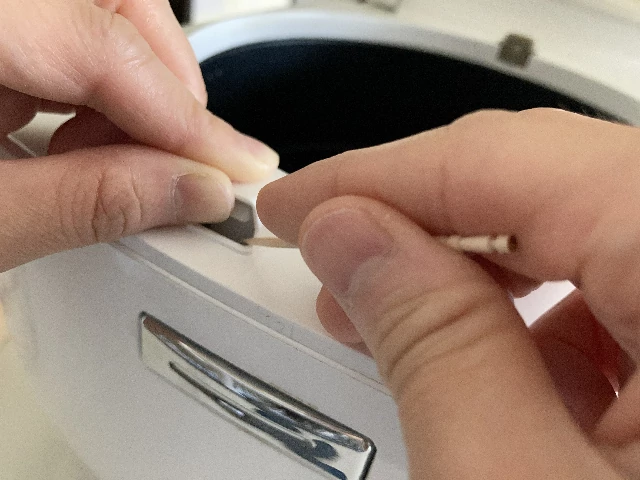
Use a toothpick to remove the rice grains, as they can easily get in through the gaps.
Step 3: Wipe the inside of the lid
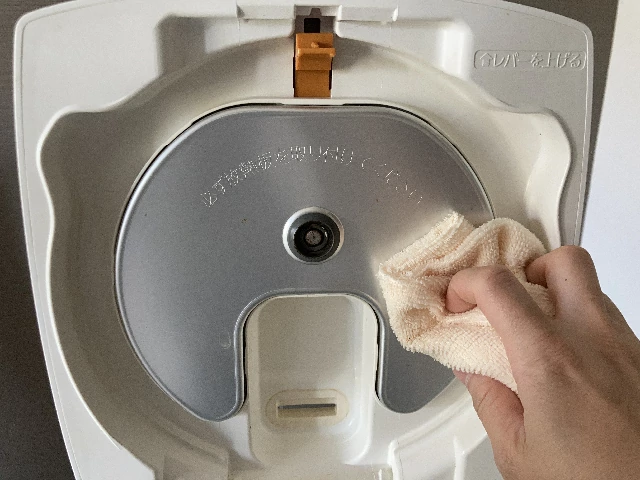
Wipe the part that the inner lid touched. If you leave the dirt here, it will cause rust and burning, so let’s wipe it off properly.
Step 4: Wipe the outside, the outer lid, and the steam vent
When the rice cooker is placed in the kitchen, oil and dust from cooking will adhere to the outside. The outer lid has a steam vent for passage of steam, so please wipe it firmly so that dust does not enter when cooking rice.
Outer/outer lid
Firmly wipe away dust and oil stickiness. If oil stains cannot be removed, wipe with a dishcloth dipped in neutral kitchen detergent diluted with water. Finally, wipe it off with water to finish it clean.
steam vent
The steam vent is narrow and difficult to wipe with a cloth, so we recommend using a cotton swab. Small crevices can be easily cleaned.
Step ⑤ Wipe the exhaust port and intake port
It is easy to overlook, but there is an exhaust port and an intake port on the bottom. Wipe it down once a month as it tends to collect dust.
Dust on the exhaust port can be easily entangled with a cotton swab. Vacuuming with a vacuum cleaner is also a good method.
Don’t forget the power cord
The power cord also gets dirty with dust. It’s easy to forget, but always keep it clean so it doesn’t lead to electrical leakage.
How to clean a rice cooker with deodorizing effect
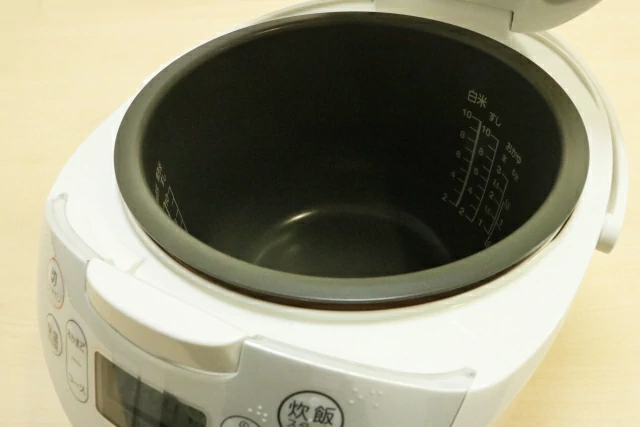
If the rice has been left in the rice cooker for a long time after cooking, or if the rice has been cooked with seasonings such as takikomi gohan, the rice cooker may still have an odor even after cleaning. If the smell is transferred to the rice, the deliciousness will be halved, so if you can’t get rid of the smell even after cleaning, try a cleaning method that can deodorize it.
Method 1: Add water and cook
Put only water in the inner pot and cook. It is a recommended method that requires no tools and is easy to do. Fill the inner pot with about 1/3 of the water (1st to 2nd stage) and cook on the quick cooking course. When finished, wait for the main body to cool down, then remove the inner pot and inner lid and wash.
There are also some that have a cleaning function in the instruction manual, and some that have a cleaning function from the beginning.
In that case, adjust the amount of water and method according to the instructions.
Read Also: Get professional roofing and restoration services by Storm Guard of Madison.
Method 2: Use citric acid and baking soda
If you can’t get rid of the smell even with mizutaki, try using citric acid or baking soda, which have a deodorizing effect. Add water to the inner pot for 7 to 8 minutes and add about 20 g of citric acid to cook. In the case of baking soda, let’s cook rice with 1/2 teaspoon of water about 1 to 2 times. When you’re done, turn off the keep warm button and wash each part after the whole cools down.
Precautions when using citric acid and baking soda
Depending on the rice cooker you are using, citric acid and baking soda may not be used as it may damage or deform the rice cooker. Please check the manual or the manufacturer before use.
How to keep the rice cooker clean after cleaning?

Regular use is also important to maintain a clean rice cooker. With a little care, regular cleaning will become easier and the rice cooker will last longer.
Do not leave rice for a long time
If you leave it with cooked rice in it, it will become a breeding ground for bacteria and mold. If you cook rice infrequently, you can increase the amount of rice you cook at one time, and divide it into small portions immediately after cooking and freeze it so that you can eat it immediately after heating. We also recommend using an ohitsu to keep the rice delicious and prevent the rice cooker from getting dirty or smelling.
Clean regularly
After use, clean the inner pot and inner lid, as well as the inside of the rice cooker every time, and wipe the dust off the outer lid when you notice it. decreases.
Dust tends to accumulate on the outside of the rice cooker, so it’s a good idea to cover it with a cloth or cover to prevent dust from accumulating.
Choose an easy-to-use rice cooker
Cleaning is easy if you choose a rice cooker with few removable parts or a rice cooker with a maintenance function. Currently, IH rice cookers are the mainstream, but there is also a method of using an old-fashioned microcomputer rice cooker. If you live alone and do not cook rice often, or if you are not particular about the taste, it is recommended because it is easy to care for.
Clean the rice cooker and cook delicious rice
Since rice is eaten every day, it is ideal to use the rice cooker in a clean state. It requires daily maintenance and a little care. If you cook rice in a rice cooker that is not only cleaned but also deodorized, the aroma of freshly cooked rice is exceptional. Keep your rice cooker clean and enjoy delicious rice.


